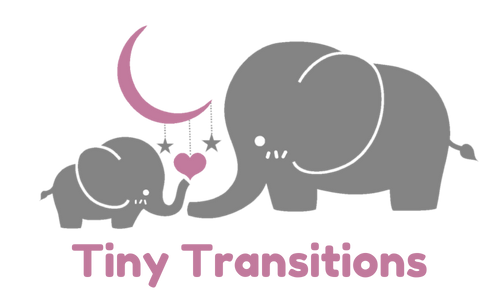Are you feeling overwhelmed by sleepless nights and restless little ones? You’re not alone! Many parents struggle with establishing healthy sleep habits for their babies. Thankfully, finding a gentle sleep coach at Tiny Transitions can be a game-changer. Let’s explore what gentle sleep coaching is, its benefits, and how you can get started on this transformative journey.
- What is Gentle Sleep Coaching?
- Benefits of Gentle Sleep Coaching
- Key Principles of Gentle Sleep Coaching
- Tips for Implementing Gentle Sleep Coaching
- Common Challenges and Solutions
What is Gentle Sleep Coaching?
Gentle sleep coaching is a nurturing approach designed to help babies and young children develop healthy sleep habits without resorting to harsh methods like cry-it-out. Instead, it emphasizes creating a soothing bedtime routine, establishing a sleep-friendly environment, and using gentle strategies to encourage self-soothing and independent sleep (Mindell & Carskadon, 2013).
Benefits of Gentle Sleep Coaching
Choosing a gentle sleep coach for baby sleep training can lead to numerous positive outcomes:
- Improved Sleep Quality and Duration: Children often experience better sleep patterns, leading to longer, more restful nights (Henderson & Jordan, 2017).
- Increased Self-Soothing Abilities: Gentle methods help children learn to self-soothe, making it easier for them to fall asleep independently (Middlemiss et al., 2012).
- Enhanced Parent-Child Relationships: Gentle coaching fosters a supportive environment that strengthens the bond between parents and their children (McKenna & Volpe, 2007).
- Reduced Risk of Sleep Problems: By addressing sleep associations early on, families can minimize future sleep issues (Mindell & Carskadon, 2013).
Key Principles of Gentle Sleep Coaching
At Tiny Transitions, our gentle sleep coaches adhere to several key principles that guide families toward establishing healthy sleep habits:
- Establishing a Bedtime Routine: A consistent routine signals to your child that it’s time to wind down and prepare for sleep (Henderson & Jordan, 2017).
- Creating a Sleep-Friendly Environment: Ensuring the sleep space is dark, quiet, and comfortable is crucial for promoting restful sleep (National Sleep Foundation, n.d.).
- Using Gentle Strategies: Techniques that encourage self-soothing are at the heart of gentle sleep coaching (Middlemiss et al., 2012).
- Gradually Transitioning to Independence: Coaches help families slowly move toward independent sleep, making the process manageable and less stressful (Mindell & Carskadon, 2013).
Tips for Implementing Gentle Sleep Coaching
Ready to get started? Here are some practical tips to help you implement gentle sleep coaching with your little one:
- Start Small: Begin with minor adjustments to your current routine and gradually work toward bigger goals. Every little change counts! Check out our Gradual Transition to Independence for more tips.
- Establish a Bedtime Routine: Use a consistent routine to signal that it’s time for sleep. This could include a bath, storytime, and cuddles. For more details, visit our Bedtime Routine Guide.
- Create a Sleep-Friendly Environment: Make sure your child’s room is dark, quiet, and at a comfortable temperature. Learn more about this in our Sleep-Friendly Environment post.
- Avoid Screens Before Bedtime: Limit screen time in the hour leading up to sleep to help your child wind down. Discover why this is important in our Screens Before Bedtime article.
Common Challenges and Solutions
As you embark on your gentle sleep coaching journey, you may encounter some common challenges. Here are a few solutions:
- Resistance to Change: It’s normal for children to resist new routines. Be patient and consistent, and remember that change takes time. For more strategies, check out our article on Resistance to Change.
- Difficulty Establishing a Bedtime Routine: If your child struggles with a routine, try simplifying it at first. Gradually add elements as they become more comfortable. For tips on creating a routine, visit our Establishing a Bedtime Routine post.
- Struggling to Create a Sleep-Friendly Environment: If your child’s room isn’t conducive to sleep, consider blackout curtains or a white noise machine. Learn more in our Creating a Sleep-Friendly Environment article.
Conclusion
Finding a gentle sleep coach for baby sleep training with Tiny Transitions can be the key to unlocking peaceful nights for both you and your little one. By embracing gentle sleep coaching, you’re not just investing in better sleep; you’re nurturing a deeper connection with your child and fostering their independence.
- Gentle sleep coaching helps establish healthy sleep habits without harsh methods.
- Benefits include improved sleep quality, increased self-soothing, and enhanced parent-child relationships.
- Key principles focus on bedtime routines, sleep-friendly environments, and gradual independence.
- Implementing small changes can lead to significant improvements in sleep.
- Common challenges can be overcome with patience and support from a gentle sleep coach.
Are you ready to transform your family’s sleep experience? Contact Tiny Transitions today to connect with a gentle sleep coach who can guide you on this journey!
For more insights on establishing a bedtime routine, don’t forget to check out our Bedtime Routine Guide.


